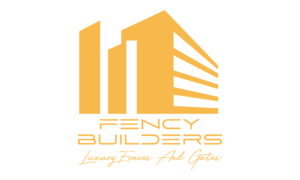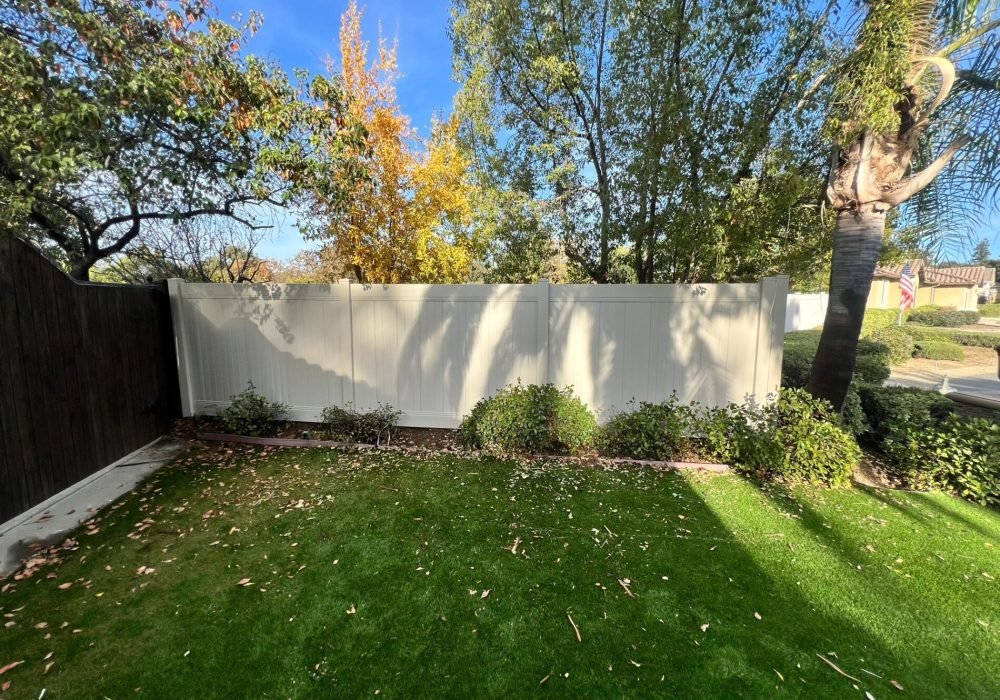Are you searching for “fence installation near me” but feeling overwhelmed by the options? Whether you’re looking to enhance your property’s security, increase privacy, or simply boost your home’s curb appeal, finding the right fencing solution is crucial. A well-installed fence does more than just mark your property line—it becomes an integral part of your home’s character and functionality.
In this comprehensive guide, I’ll walk you through everything you need to know about professional fence installation services in your area. From choosing the right materials to understanding the installation process and finding reputable contractors, you’ll have all the information needed to make an informed decision for your property.
Why Quality Fence Installation Matters for Your Property
Before diving into the specifics, let’s talk about why professional fence installation is worth the investment. You might be tempted to view fencing as a simple DIY project, but there’s much more to it than hammering posts into the ground.
Enhancing Property Value and Curb Appeal
Did you know that a well-designed, professionally installed fence can increase your property value by up to 5%? That’s right—fencing is more than just functional; it’s an investment in your home’s market value.
When potential buyers view your property, the fence is often one of the first features they notice. A straight, level, and aesthetically pleasing fence creates an immediate positive impression. On the flip side, a poorly installed fence with uneven posts, gaps, or misaligned sections can detract from your home’s appeal.
I’ve seen countless properties transformed by the addition of the right fence. One of my clients installed a classic white picket fence around their colonial-style home and received three offers above asking price when they sold—the fence was mentioned specifically by all potential buyers as a selling point.
Security and Privacy Benefits of Professional Fencing
Beyond aesthetics, the primary functions of most fences are security and privacy. A professional installation ensures your fence actually delivers on these promises.
For security purposes, a fence needs to be sturdy and properly anchored. DIY installations often lack the deep post holes and concrete footings that prevent pushing, pulling, or climbing. Professional installers understand the right depth and anchoring techniques for your specific soil conditions and fence type.
Privacy fencing requires precise installation to eliminate gaps and maintain height regulations. Professionals ensure boards are placed correctly with minimal spacing (unless a specific design calls for it) and that height is consistent throughout—even on sloped terrain.
A client in a busy neighborhood once told me, “My backyard went from feeling like a fishbowl to becoming my personal sanctuary,” after installing a 6-foot cedar privacy fence. The transformation wasn’t just about the fence itself but the professional installation that ensured complete coverage without gaps or weak points.
Types of Fencing Materials and Their Benefits
When you search for “fence installation near me,” you’ll discover a variety of materials available. Each has distinct advantages depending on your priorities, aesthetic preferences, and budget.
Wood Fencing Options and Considerations
Wood remains the most popular fencing material for many homeowners, and for good reason. It offers a natural look that blends with any landscape while providing versatility in design options.
Cedar and redwood are premium choices due to their natural resistance to insects and rot. They weather to a beautiful silver-gray patina over time unless sealed regularly. Pressure-treated pine offers a more budget-friendly option with decent durability, though it typically won’t last as long as cedar or redwood.
Wood fencing can be configured in numerous styles:
- Privacy fencing with overlapping boards
- Picket fencing for a classic, open look
- Post-and-rail designs for rural properties
- Board-on-board for a symmetrical appearance on both sides
The downside? Wood requires regular maintenance. Expect to clean, stain, or seal your wooden fence every 2-3 years to maximize its lifespan, which typically ranges from 15-30 years depending on the wood type and care provided.
Vinyl and PVC Fencing Solutions
If low maintenance is your priority, vinyl fencing deserves serious consideration. This material has come a long way from the flimsy, fake-looking options of the past.
Modern vinyl fencing mimics the appearance of wood surprisingly well while offering significant advantages:
- Zero maintenance beyond occasional cleaning with a hose
- No painting, staining, or sealing required
- Resistance to fading, cracking, and peeling
- Typical lifespans of 30+ years
The initial investment for vinyl is higher than wood, often by 25-35%. However, when you factor in the lifetime maintenance costs of wood, vinyl frequently proves more economical in the long run.
I recently visited a client’s 15-year-old vinyl fence that still looked nearly new. “Best decision I ever made,” she told me. “My neighbor’s wooden fence has been replaced twice in the same timeframe.”
Metal Fencing: Aluminum, Steel, and Wrought Iron
Metal fencing offers unmatched durability and security while providing elegant, open designs that don’t block views or airflow.
Aluminum fencing is lightweight, rust-resistant, and ideal for decorative applications. It’s particularly well-suited for pools and areas where you want security without visual heaviness. Most aluminum fences come with powder-coated finishes in black or bronze that require virtually no maintenance.
Steel and wrought iron provide maximum security and a classic, upscale appearance. These heavier metals create formidable barriers that are difficult to breach, making them excellent choices for security-conscious homeowners. The ornamental designs available can transform these practical barriers into artistic statements.
The drawback of iron is potential rusting, though modern manufacturing techniques and protective coatings have greatly reduced this concern. Steel and iron fences typically last 50+ years with minimal maintenance, justifying their premium price point.
Chain Link Fencing for Practical Applications
Don’t dismiss chain link too quickly. While it may not offer the aesthetic appeal of other options, chain link provides functional, cost-effective fencing for many applications:
- Pet containment
- Child safety around play areas
- Property boundary marking
- Large acreage enclosure on a budget
Modern chain link has evolved beyond the basic silver galvanized look. Today’s options include:
Decorative Options for Chain Link Fences
- Vinyl-coated chain link in black, green, or brown that blends with landscapes
- Privacy slats that can be woven through the links
- Decorative post caps and railings
- Combining with landscaping for a softer appearance
Chain link typically costs 50-70% less than wood or vinyl alternatives, making it an economical choice for large areas. With proper installation and modern coating technologies, today’s chain link fences can last 20+ years with virtually no maintenance.
The Professional Fence Installation Process Explained
When you hire a fence installation company, understanding their process helps set realistic expectations and ensures you’re getting quality service.
Initial Consultation and Property Assessment
A reputable fence installer begins with a thorough property assessment. This isn’t just about measuring the perimeter; it involves:
- Identifying property lines (often requiring survey documents)
- Noting underground utilities that require marking before digging
- Assessing soil conditions that might affect post stability
- Identifying drainage patterns to prevent water damage
- Noting elevation changes that require special installation techniques
During my consultation with a fence installer, I was impressed when he immediately spotted potential water flow issues that would have caused premature rot if not addressed in the design. This level of expertise is what separates professionals from casual installers.
Design and Material Selection
After assessment, the installer should discuss design options suited to your specific property and needs. They’ll help you navigate material choices based on:
- Your aesthetic preferences
- Functional requirements (privacy, security, pet containment)
- Local climate considerations
- Maintenance expectations
- Budget constraints
A good installer shows samples and photos of completed projects similar to your vision. They might suggest modifications based on their experience that could save you money or improve functionality.
Obtaining Permits and Checking Local Regulations
One of the most valuable services professional installers provide is navigating the often-complex world of permits and regulations. Many homeowners are unaware that fences typically require permits and must adhere to:
- Height restrictions (often different for front and back yards)
- Setback requirements from property lines
- Homeowners Association (HOA) design guidelines
- Corner lot visibility requirements for traffic safety
- Historic district restrictions if applicable
Professional installers handle this paperwork for you, ensuring your fence is fully compliant and preventing costly removal or modification orders after installation.
The Installation Timeline: What to Expect
A typical fence installation follows this timeline:
Final inspection and cleanup (half-day): Ensuring quality and removing all debris
Preparation (1-2 days): Property marking, utility location, and material delivery
Post installation (1-2 days): Digging holes, setting posts in concrete
Curing period (1-3 days): Allowing concrete to set properly
Rails and pickets/panels (1-3 days): Installing horizontal supports and finishing materials
Gates and hardware (1 day): Adding functional elements and finishing touches
From start to finish, expect a typical residential fence installation to take 5-10 business days, depending on length, complexity, and weather conditions.
How to Choose the Right Fence Installation Company Near You
Now that you understand what goes into quality fence installation, how do you find the right professionals in your area?
Credentials and Experience to Look For
Start by verifying basic business credentials:
- Business license and proof of insurance
- Bonding (which protects you if they fail to complete the work)
- Worker’s compensation coverage for their employees
- Specialized fence contractor license if required in your state
Beyond these basics, look for:
- Membership in industry associations like the American Fence Association
- Years of specific fence installation experience (not just general contracting)
- Familiarity with your desired fence type and material
- Photos of similar projects they’ve completed
I always recommend asking potential installers how many fences of your specific type they install annually. A company that puts in 50+ wood privacy fences each year will likely be more efficient and skilled with that specific product than a general contractor who does a few fences among many other projects.
Reading Reviews and Checking References
Online reviews provide valuable insights, but dig deeper than just the star rating:
- Look for patterns in both positive and negative comments
- Pay attention to how the company responds to negative reviews
- Check multiple platforms (Google, Yelp, BBB, Angi, etc.)
- Look specifically for reviews mentioning your fence type
Even more valuable are direct references. Ask for contact information of recent customers with similar fencing projects, then ask these references:
- Was the installation completed on schedule?
- Did they stay within the quoted budget?
- How did they handle unexpected challenges?
- How has the fence held up since installation?
- Would they choose this company again?
Comparing Quotes and Understanding Pricing
Collect at least three quotes from different installers to compare pricing. However, be wary of focusing solely on the bottom line. A comprehensive quote should include:
- Detailed material specifications (not just “wood fence” but “6-foot cedar privacy fence with 4×4 posts, 2×4 rails, and 1×6 pickets”)
- Labor costs broken out separately
- Concrete and hardware specifics
- Permit fees if applicable
- Gate details and hardware
- Cleanup and debris removal
- Warranty information
The lowest bid often excludes crucial elements that will be added as “extras” later. I’ve seen quotes differ by thousands of dollars because one company specified pressure-treated posts set in 80 pounds of concrete per post, while another planned to use standard posts with minimal concrete footings.
Maintaining Your Newly Installed Fence for Longevity
Once your fence is installed, proper maintenance ensures you’ll enjoy it for decades to come.
Seasonal Maintenance Tips
Different fencing materials require specific maintenance approaches:
For wood fencing:
- Inspect annually for damaged boards, loose nails, or posts
- Clean with mild detergent and soft brush or pressure washer on low setting
- Apply water repellent or stain every 2-3 years
- Keep soil and mulch from direct contact with wood
- Trim vegetation to prevent moisture retention
Vinyl fence:
- Wash with soapy water and soft brush annually
- Check for cracked sections, especially after extreme weather
- Remove mildew with vinegar solution if it appears
- Keep sprinklers adjusted to prevent mineral deposits
Metal fencing:
- Inspect for rust spots and treat immediately
- Check for loose fasteners or brackets
- Touch up paint chips to prevent corrosion
- Keep gates properly aligned and lubricated
When to Call Professionals for Repairs
While many maintenance tasks are DIY-friendly, certain situations warrant professional attention:
- Leaning or severely damaged posts (often indicating foundation issues)
- Major storm damage affecting multiple sections
- Gate hardware that no longer aligns properly
- Significant rust or rot compromising structural integrity
- Repair of specialized materials like ornamental iron or composite
Most quality fence installers offer maintenance services and minor repairs. Establishing a relationship with your installer often results in prioritized service when issues arise.
A client once told me, “I thought I could save money fixing the storm damage myself, but I ended up spending twice as much when I eventually called the professionals to fix my fixes.” There’s wisdom in knowing when a repair is beyond DIY scope.
Conclusion
Finding the right “fence installation near me” involves more than just a quick internet search. By understanding the materials available, the installation process, and how to vet potential contractors, you’ll make informed decisions that result in a fence that enhances your property for years to come.
A quality fence is an investment in your property’s value, security, and aesthetic appeal. While professional installation might cost more initially than DIY approaches, the durability, compliance with local codes, and peace of mind are well worth the investment.
Remember to maintain your fence according to the manufacturer’s recommendations, and don’t hesitate to contact professionals for repairs beyond your comfort level. With proper care, your new fence will serve its purpose beautifully for decades.
FAQs About Professional Fence Installation
How much does professional fence installation typically cost per linear foot?
The cost varies significantly based on material choice and your location, but general ranges are:
- Chain link: $15-30 per linear foot installed
- Wood privacy fence: $25-50 per linear foot installed
- Vinyl fencing: $35-60 per linear foot installed
- Aluminum ornamental: $40-60 per linear foot installed
- Wrought iron: $60-100+ per linear foot installed
Additional factors affecting cost include gate installation, difficult terrain, removal of existing fencing, and permit fees.
How long should I expect my new fence to last?
Lifespan varies by material:
- Chain link: 20-30 years
- Wood (pressure-treated pine): 15-20 years
- Wood (cedar or redwood): 25-30+ years with proper maintenance
- Vinyl: 30+ years
- Aluminum: 30+ years
- Steel or wrought iron: 50+ years with proper maintenance
These estimates assume professional installation and appropriate maintenance.
Will fence installation increase my property taxes?
In most jurisdictions, fence installation will technically increase your property value, which could marginally affect your assessment. However, the increase is typically minimal compared to the fence’s cost and benefits. Fences are considered site improvements rather than structural additions, so their impact on taxes is generally small. Check with your local tax assessor for specific guidance in your area.
Can fence installation be done in winter?
Yes, in many climates fence installation can continue through winter, though with some limitations. The main concern is frozen ground, which makes post hole digging difficult or impossible. Some installers use specialized equipment to work in frozen conditions. Winter installation might actually offer advantages like better contractor availability and potentially lower pricing. However, concrete setting may require special additives in freezing temperatures, and some materials like vinyl become more brittle in extreme cold.
How close to my property line can I install a fence?
This varies significantly by local ordinances, but most municipalities allow fences directly on property lines if they meet height and style regulations. However, placing the fence a few inches inside your property line is often recommended to ensure you don’t accidentally encroach on neighboring property. Some areas require setbacks from front property lines or corner lots for visibility reasons. Always check your local zoning regulations and consider getting a property survey before installation to avoid boundary disputes with neighbors.


